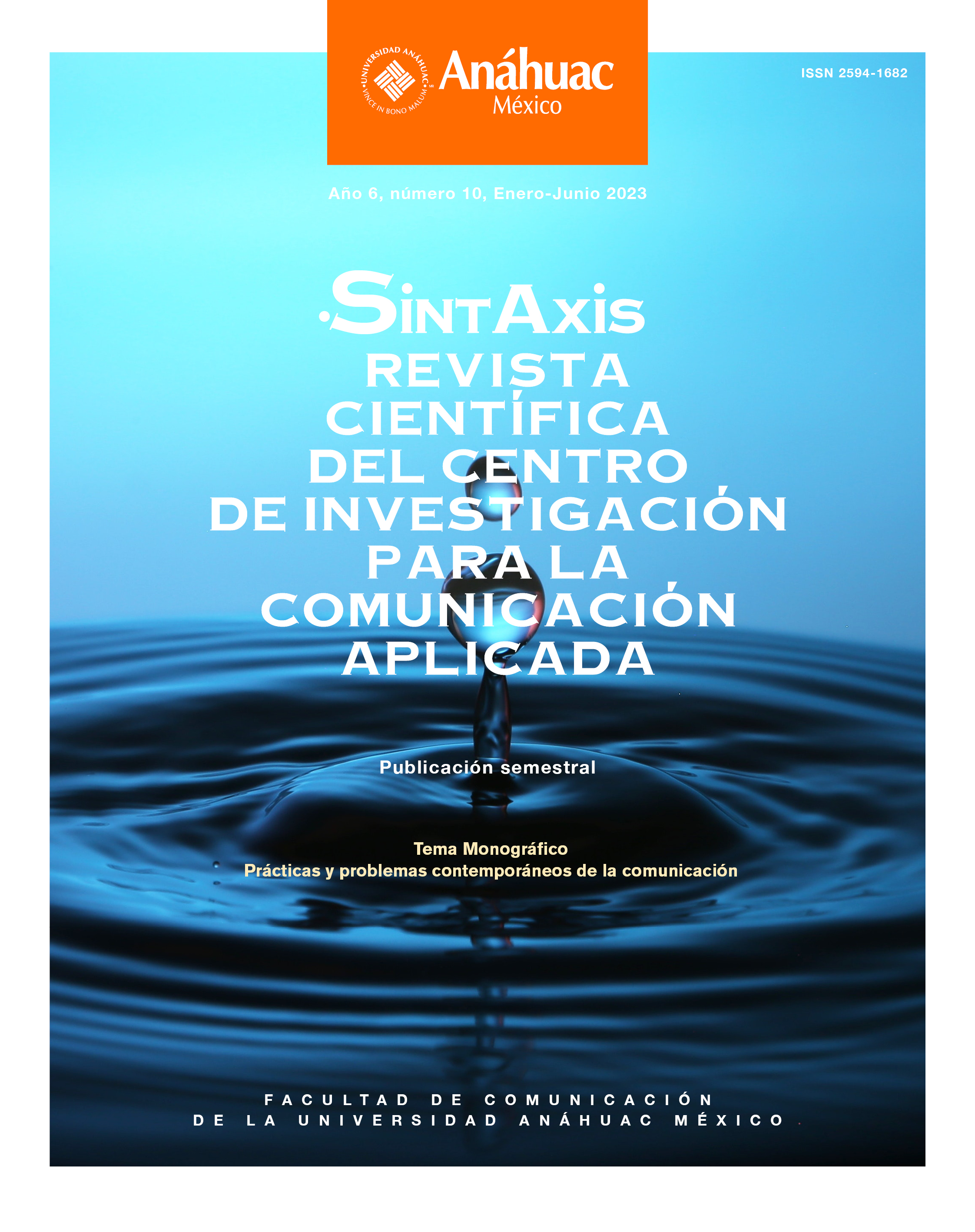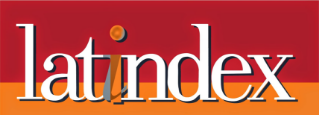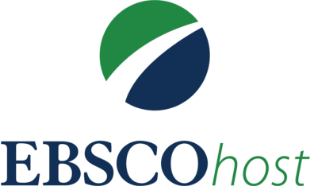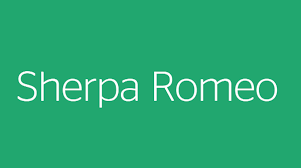Quality of organizational communication, capital and social impact in the annual reports of supermarkets in Mexico
DOI:
https://doi.org/10.36105/stx.2023n10.03Keywords:
quality, organizational communication, social cohesión, social capital, social impactAbstract
The information that is made public by private organizations listed on the Mexican Stock Exchange is intended to account mainly for their financial results, but also includes relevant information about their operation, organizational philosophy and activities that allow evaluating their role within of society, their contributions and impact. However, given the amount of information that currently exists on the web, and the difficulty in recognizing the importance of the information to which one has access, this article proposes a series of categories to assess the quality of the information. communication (logistics, attention, utility and influence) and that is presented in the 2021 annual report of the four supermarkets in Mexico listed on the bmv in order to relate them to the formation of social capital (Bourdieu, 1990; Lin, 2001), social cohesion (Durkheim, 2007) and social impact (Esteves et al., 2012). The methodology used was qualitative through content analysis. Among the main findings is that the annual reports meet the communication quality levels, although the attention they give to their criteria is different in each case. In this sense, the quality of communication has a social impact on its audiences through the content that includes aspects that enhance the cohesion and social capital generated by this type of organization.
Downloads
References
Allison, R., Hayes, C., McNulty, C., y Young, V. (2019). A comprehensive framework to evaluate websites: Literature review and development of goodweb. JMIR formative research, 3(4), 1-12. https://doi.org/10.2196/14372
Alpert, H. (1986). Durkheim. Fondo de Cultura Económica.
Aranyi, G., van Schaik, P., y Barker, P. (2012). Using think-aloud and psychometrics to explore users’ experience with a news web site. Interacting with Computers, 24(2), 69-77. https://doi.org/10.1016/j.intcom.2012.01.001
Arévalo, R., y Rebeil, M. (2017). Presencia, interacción y responsabilidad social organizacional en las redes sociales digitales de organizaciones privadas en Iberoamérica. Responsabilidad social en la comunicación digital organizacional. Tirant Lo Blanch.
Bourdieu, P. (1990). Cuestiones de sociología. Grijalbo.
Bourdieu, P. (2001). Poder, derecho y clases sociales. Descleé de Brouwer.
Chedraui. (2022). Informe anual 2021.
Chung, C., Nam, Y., y Stefanone, M. (2012). Exploring online news credibility: The relative influence of traditional and technological factors. Journal of Computer-Mediated Communication, 17(2), 171-186.
https://doi.org/10.1111/j.1083-6101.2011.01565.x
Contreras, O., y Garibay, N. (2020). Comunicación organizacional. Historia, desarrollo y perspectivas de un concepto en constante construcción en América Latina. InMediaciones de la Comunicación, 15(2), 43-70. http://doi.org.10.18861/ic.2020.15.2.3018
Cristóbal, E., Hernández, F., y Marimon, F. (2017). Critical factors in the evaluation of online media: creation and implementation of a measurement scale (e-SQ-Media). Universal Access in the Information Society, 16(1), 235-246. https://doi.org/10.1007/s10209-016-0454-3
Diario Oficial de la Federación (2009). Ley del mercado de valores. https://www.diputados.gob.mx/LeyesBiblio/pdf/LMV_090119.pdf
Durkheim, É. (2007). La división del trabajo social. Colofón.
Esteves, A., Franks, D., y Vanclay, F. (2012). Social impact assessment: the state of the art, Impact Assessment and Project Appraisal, 30(1), 34-42. https://doi.org/10.1080/14615517.2012.660356
Fernández, C., y Galguera, L. (2008). La comunicación humana en el mundo contemporáneo. McGraw-Hill Interamericana.
Flavián, C., y Gurrea, R. (2006). The choice of digital newspapers: influence of reader goals and user experience. Internet Research, 16(3), 231-247. https://doi.org/10.1108/10662240610673673
Freixa, P. (2020). Herramientas e indicadores para el análisis de la temporalidad en el periodismo digital y el documental interactivo. Comunicación y diversidad. Selección de comunicaciones del VII Congreso Internacional de la Asociación Española de Investigación de la Comunicación (AE- IC), 25-37. https://doi.org/10.3145/AE-IC-epi.2020.e02
Grupo Bolsa Mexicana de Valores (2022). Empresas listadas. https://www.bmv.com.mx/es/empresas-listadas
Guallar, J., Codina, L., Freixa, P., y Pérez, M. (2020). Desinformación, bulos, curación y verificación. Revisión de estudios en Iberoamérica 2017-2020. Telos Revista de Estudios Interdisciplinarios en Ciencias Sociales, 22(3), 595-613. https://doi.org/10.36390/telos223.09
Instituto Nacional de Estadística y Geografía (2020). Estadísticas a propósito del día mundial del internet (17 de mayo): Datos nacionales. https://www.inegi.org.mx/contenidos/saladeprensa/aproposito/2020/eap_internet20.pdf
La Comer. (2021). Consolidando buenos resultados. Informe anual 2021.
https://lacomerfinanzas.com.mx/wp-content/uploads/informes/IA2021.pdf
Lin, N. (2001). Social capital: A theory a social structure and action. Cambridge University Press.
Méndez, C., y Palacios, N. (2020). Análisis de la gestión de comunicación organizacional en empresas vinculadas a normas de comercio seguro. Revista Scientific, 5(18), 67-84. https://doi.org/10.29394/Scientific.issn.2542-2987.2020.5.18.3.67-84
Morales, A., Pedraza, R., y Codina, L. (2022). Calidad web en medios digitales: revisión bibliográfica sobre métodos e indicadores de evaluación general y atributos de confianza. Revista Latina de Comunicación Social, (80), 39-63. https://www.doi.org/10.4185/RLCS-2022-1515
Osorio, R. y Castro, D. (2021). Aproximaciones a una metodología mixta. novaRua, 13(22), 65-84. http://dx.doi.org/10.20983/novarua.2021.22.4
Pazmay, S. (2019). Mejoramiento de comunicación interna en empresas de calzado en Tungurahua-Ecuador. PODIUM, (36), 23-34. https://doi.org/10.31095/podium.2019.36.2
Puertas, R., Yaguache, J., y Altamirano, V. (2020). Nuevas tendencias en la comunicación organizacional. Eusal, (20), 7-11. https://doi.org/10.14201/fjc202020711
Rivas, R., Caro, F., y García, M. (2020). Indicadores transnacionales de calidad informativa basados en la experiencia de periodistas locales: estudios de caso en medios digitales de Alemania, España y Reino Unido. Comunicación y diversidad. Selección de comunicaciones del VII Congreso Internacional de la Asociación Española de Investigación de la Comunicación (AE-IC), 39-50. https://doi.org/10.3145/AE-IC-epi.2020.e03
Robertson, E. (1991). The pyramid of quality: measuring customer satisfaction in employee communication campaigns. Communication World, 8(9), 32-35.
https://www.proquest.com/docview/210195612/4691701FBCB44216PQ/14?accountid=41021
Rodríguez-Fernández, L., y Vázquez-Sande, P. (2019). Retos y perspectivas en la comunicación organizacional. El profesional de la información, 28(5), 1-7. https://doi.org/10.3145/epi.2019.sep.01
Romero, M., De Casas. P., y Torres, Á. (2016). Dimensiones e indicadores de la calidad informativa en los medios digitales. Comunicar, 24(49), 91-100. https://doi.org/10.3916/C49-2016-09
Schnapper, D. (2007). Qu’est-ce que l’integration ? Gallimard.
Soriana. (2021). Informe anual 2021. https://www.organizacionsoriana.com/pdf/Infome%20Anual/2021/Soriana_IA_2021_Web.pdf
Vanclay, F. (2003). International principles for social impact assessment. Impact Assessment and Project Appraisal, 21(1), 5-12. https://doi.org/10.3152/147154603781766491
Walmart. (2021). Vamos más allá del retail. Informe 2021. https://informes.walmex.mx/2021/pdfs/capitulos/Walmart_ia_2021.pdf
Downloads
Published
Issue
Section
License
Copyright (c) 2023 Dra. Rebeca-Illiana Arévalo-Martínez, Guillermo García Mayo

This work is licensed under a Creative Commons Attribution-NonCommercial-NoDerivatives 4.0 International License.
The author keeps the property rights with no restriction whatsoever and guarantees the magazine the right to be the first publication of the work. The author is free to deposit the published version in any other medium, such as an institutional archive or on his own website.

















